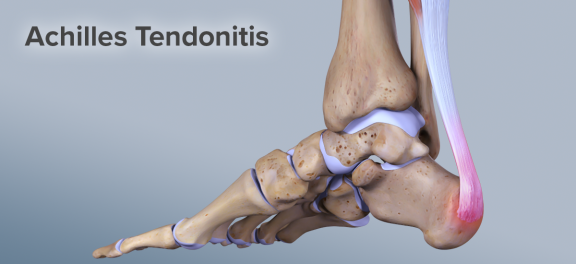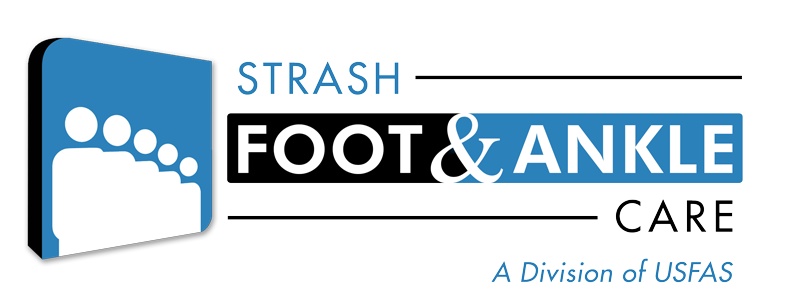
12 Apr Tendinitis | It’s Much More Common Than You Think
One of the common foot and ankle conditions I see is foot and ankle tendinitis — and not just with high performing athletes, but with every day folks. Patients will come to the office with tenderness about the ankle or to the tendons on the top and bottom of the foot. The muscles of the leg, foot and ankle are anchored to the bones by tendons which are strong cordlike structures. Tendinitis is inflammation surrounding the tendon. Patient’s will experience pain with activity and the pain usually subsides with rest, however, will return again with the same activity.
The most common forms of tendinitis about the foot and ankle are Achilles tendinitis, posterior tibial tendinitis, peroneal tendinosis, flexor tendinitis and extensor tendinitis. Many times, patients present to the office telling me they have not had any form of injury, however, they’ll say they have been doing a great deal walking. Overuse is the most common form of injury to the tendons of the foot and ankle. With a busy lifestyle it’s commonplace for patients to overlook injuries to the foot and ankles. We tend to take our feet for granted using them too much and then not understanding why this pain has occurred.
So the most common causes of foot and ankle tendinitis are overuse, abnormal foot structure, trauma, and certain medical conditions.
Overuse: This most common cause of tendinitis is from overuse which means the tendon becomes abnormally stretched and there may be small tears to the tendon causing pain and inflammation. This occurs in individuals who have walked a great deal and/or participate in competitive sports.
Abnormal foot structure: Some patients will have an abnormally high arch foot or an abnormally flatfoot and this can place undue stress on some of the tendons of the foot and ankle causing stretching and tearing and ultimately pain and a inflammation.
Trauma: Sometimes a foot and ankle injury can cause tendinitis. An ankle sprain can cause tendinitis to the peroneal tendons on the outside of the ankle and some patients will have an ankle sprain along with peroneal tendonitis. Sudden and power motions like jumping and repetitive high impact sports can cause tendinitis of the foot and ankle.
Systemic conditions: Certain systemic medical conditions can cause inflammation to tendons of the ankle. Conditions such as rheumatoid arthritis, gout, and lupus can cause conditions such as Achilles tendinitis and posterior tibial tendinitis.
Patients will typically complain of pain and some swelling about the foot ankle with swelling of the involved tendon. The pain to the tendon is usually relieved by rest, however, the tendon may be somewhat painful and tender to touch. Patients will notice the area will feel somewhat stiff when beginning activity and after a period of time the tendon will loosen up and improve slightly. This is short-lived as the tendon will be painful to the touch after an activity once again.
If you think you have tendinitis of the foot and ankle you will want to stop the activity that may be causing it. Apply ice at the end of the work day for approximately 20 minutes on and ten minutes off for a period of 2 hours. Anti-inflammatory medications may also help, however if the symptoms persist for longer than 10-14 days, you will want to seek the help of your foot and ankle specialist.
Your podiatrist will take a history and physical and may order x-rays and possibly an MRI of your foot and ankle. If the tendon is just strained and not torn, immobilization in a fracture boot or cast may be necessary. Depending on the severity of the pathology to the tendon, surgery may be necessary.
You don’t need to live in pain when you don’t have to! If the pain and swelling persists, give me a call. It’s always my number one priority to helping you place your best foot forward, again!

